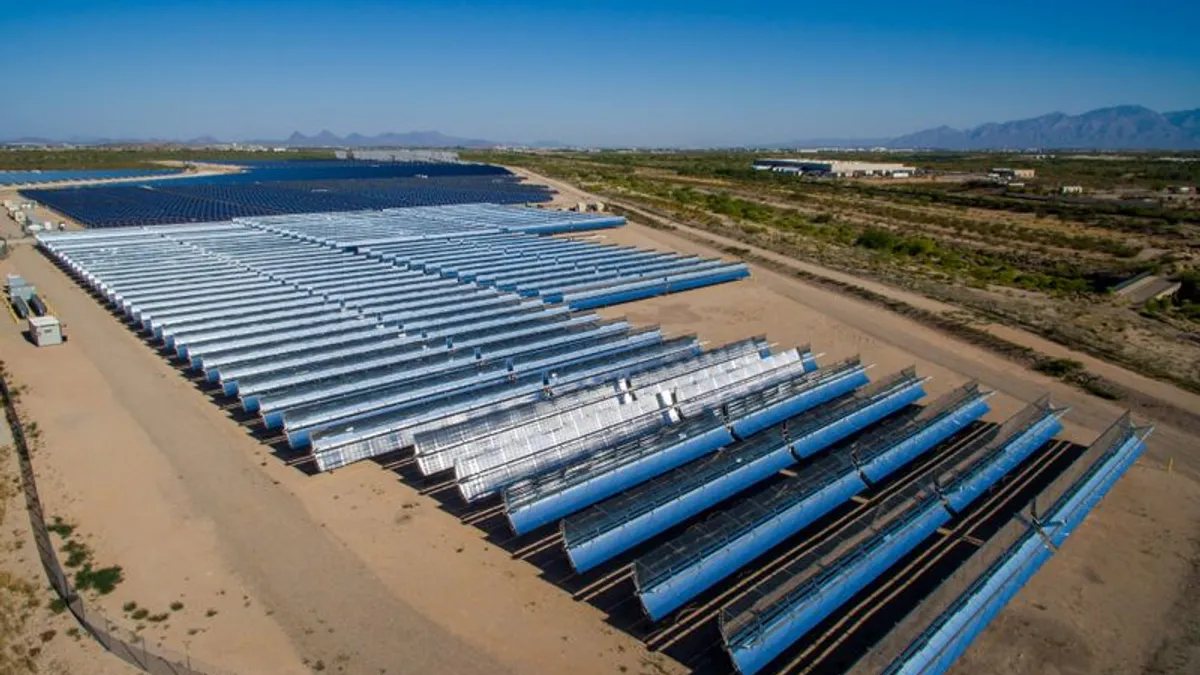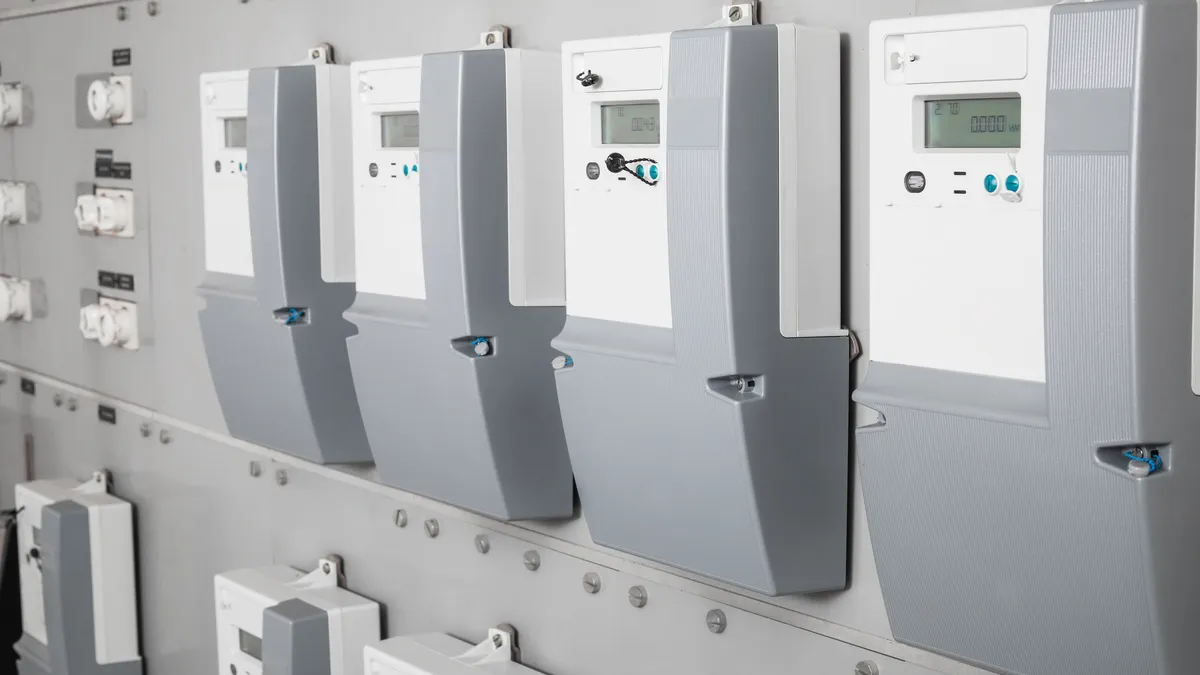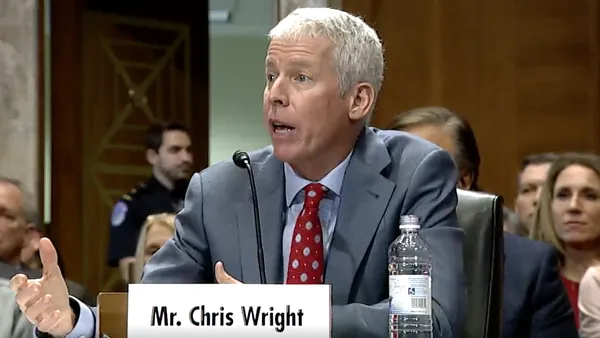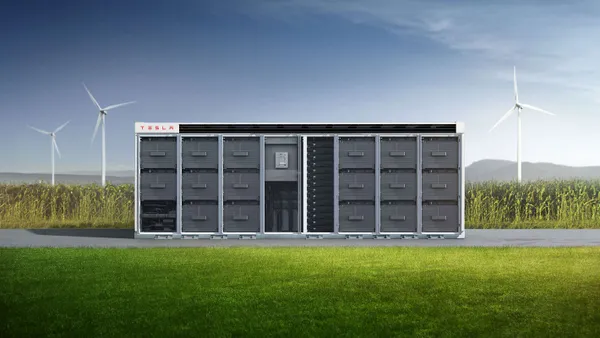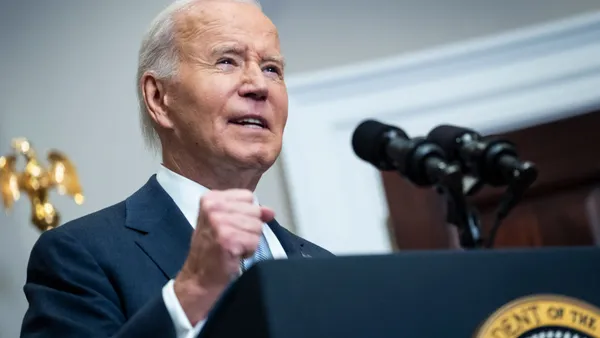Dive Brief:
-
The corporate procurement of utility-scale solar power has grown from less than 1% of annual installed utility-scale capacity in 2014 to 9% in 2016 and 17% in early 2017, according to a new report from the National Renewable Energy Laboratory.
-
Through July 2017, corporate buyers contracted for more than 2,300 MW of utility-scale solar, primarily using financial power purchase agreements and green tariff or bilateral contracts with utilities (43% and 36%, respectively), the report found.
- For solar power to play a larger role in corporate purchasing, the report authors said states and utilities should consider working with stakeholders to develop purchasing options in areas where solar is most cost -competitive.
Dive Insight:
Corporations have been active in purchasing renewable energy for many years, and in 2015 they outpaced utilities as buyers of wind power.
According to the NREL report, corporations do not prefer wind or solar power — they typically are interested in purchasing renewable power at the least cost. But companies have contracted for more wind so far because of its low-cost availability in Texas and the ability to sign a PPA.
In its report, NREL examines the four pathways for procuring utility-scale solar power: PPAs, retail choice, utility partnerships (green tariffs and bilateral contracts with utilities), and by becoming a licensed wholesale seller of electricity.
The report’s authors say that in order to expand corporate solar procurement both a purchasing pathway and cost-competitive solar are required. They say California and Nevada have seen the most corporate solar purchases, with PPAs dominating in California and green tariffs in Nevada. But purchasing options are just emerging or do not exist in other areas with strong solar potential. By opening options in areas of the country where it is most cost competitive, solar power could become a preferred choice for corporate customers, the authors say.


